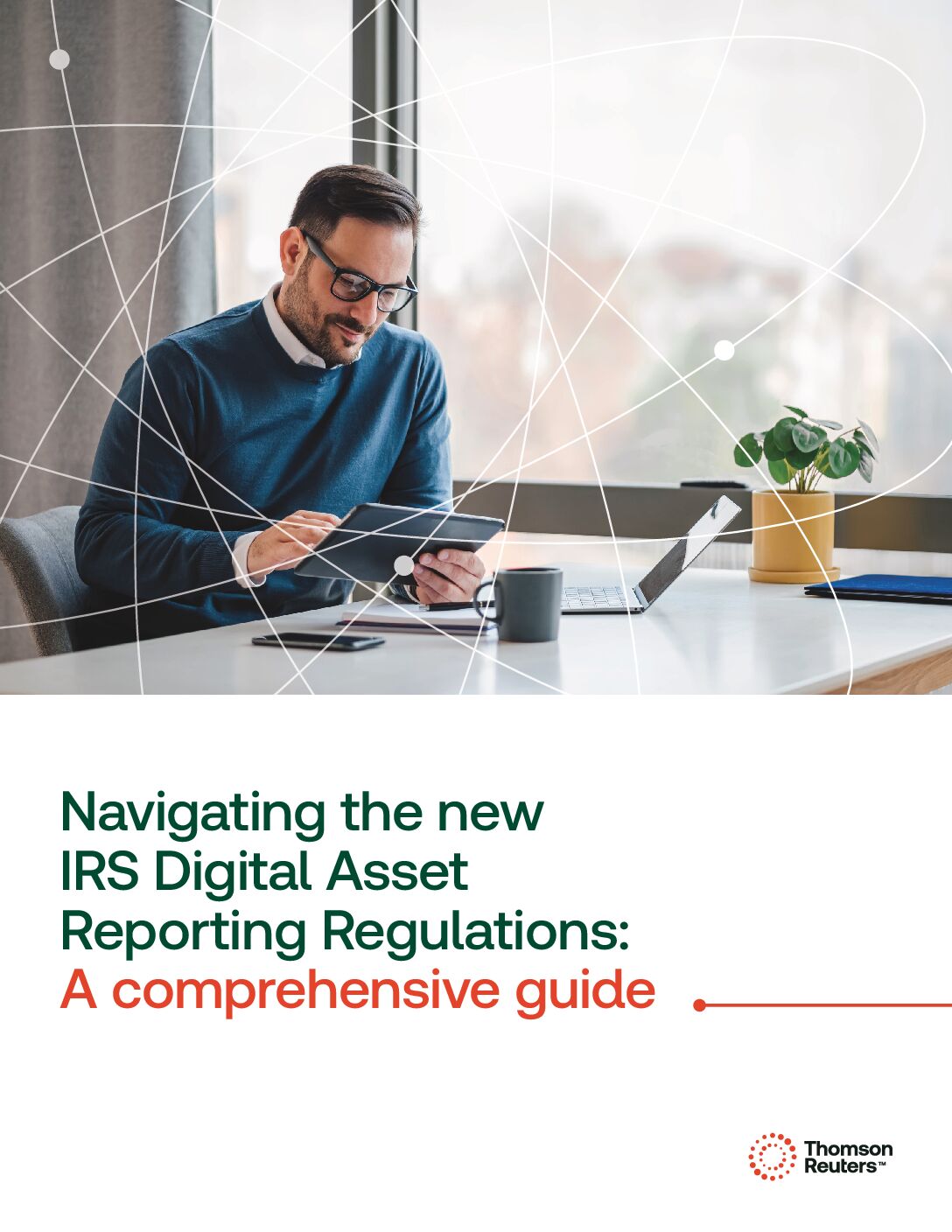A practical guide for tax and accounting professionals navigating the regulatory, reporting, and compliance implications of the GENIUS Act and stablecoin adoption.
Jump to ↓
| What is a stablecoin? |
| Key regulatory requirements under the GENIUS Act |
| Tax implications for stablecoin holders and issuers |
| What to watch: State vs. Federal oversight |
| Action steps for tax and accounting professionals |
| Preparing for the future of digital assets |
The digital asset landscape is evolving rapidly — and with it, the regulatory frameworks that govern how these assets are issued, used, and reported.
On June 17, 2025, the U.S. Senate passed the Guiding and Establishing National Innovation for U.S. Stablecoins Act—better known as the GENIUS Act. This legislation introduces a comprehensive federal framework for the regulation of payment stablecoins.
For tax and accounting professionals, the GENIUS Act is more than just a policy milestone—it’s a signal that stablecoins are entering the mainstream financial system. Understanding how this law affects your clients’ reporting obligations, accounting treatment, and compliance posture is now essential.
What is a stablecoin?
A stablecoin is a type of digital asset designed to maintain a stable value by being pegged to a fiat currency, such as the U.S. dollar. Unlike volatile cryptocurrencies like Bitcoin or Ethereum, stablecoins are intended to function as a reliable medium of exchange and store of value.
Under the GENIUS Act, a “payment stablecoin” is defined as a digital asset that:
-
- Is used (or designed to be used) for payments or settlements;
- Is redeemable for a fixed amount of monetary value; and
- Maintains a stable value relative to a fiat currency.
Only “permitted payment stablecoin issuers”—entities approved by federal or state regulators—are allowed to issue these assets in the U.S.
Key regulatory requirements under the GENIUS Act
The GENIUS Act introduces a robust set of requirements for stablecoin issuers, including:
-
- Reserve backing
Issuers must maintain reserves on a 1:1 basis with outstanding stablecoins. These reserves must be held in highly liquid assets such as:
-
-
-
- U.S. currency or deposits at Federal Reserve Banks
- Treasury bills with maturities under 93 days
- Overnight repurchase agreements backed by Treasuries
-
-
-
- Transparency and audits
Issuers are required to:
-
-
-
- Publish monthly reserve disclosures
- Undergo monthly third-party audits
- Certify reserve accuracy through executive sign-off
-
-
-
- AML and sanctions compliance
Stablecoin issuers are treated as financial institutions under the Bank Secrecy Act and must implement:
-
-
-
- Anti-money laundering (AML) programs
- Customer identification and due diligence procedures
- Sanctions compliance systems
-
-
-
- Restrictions on marketing and yield
-
-
-
- Issuers cannot pay interest or yield on stablecoins.
- Marketing must not imply government backing or legal tender status.
-
-
|
|
Tax implications for stablecoin holders and issuers
While the GENIUS Act clarifies regulatory oversight, it also raises important tax considerations. Here’s what tax professionals should keep in mind:
-
- Classification and reporting
-
-
- Stablecoins are still treated as property for federal tax purposes unless the IRS issues new guidance.
- Each transaction involving a stablecoin—whether it’s a purchase, redemption, or exchange—may trigger a taxable event.
- Businesses accepting stablecoins must record the fair market value at the time of receipt, which becomes the basis for future gains or losses.
-
-
- Accounting treatment
-
-
- Stablecoins issued by non-permitted entities cannot be classified as cash or cash equivalents.
- This affects how businesses report digital assets on their balance sheets and may require separate line items or disclosures.
-
-
- Redemption and valuation
-
-
- Although stablecoins are designed to maintain a fixed value, timing differences between acquisition and redemption can still result in capital gains or losses.
- Professionals should advise clients to maintain detailed records of acquisition cost and redemption value.
-
-
- Foreign issuers and cross-border risks
-
-
- Stablecoins issued by foreign entities face additional scrutiny under the Act.
- U.S. persons holding or transacting with these assets may be subject to FATCA, FBAR, and other international reporting requirements.
-
What to watch: State vs. Federal oversight
The GENIUS Act allows for both federal and state-level regulation of stablecoin issuers. Key distinctions include:
-
- State-qualified issuers can operate under state regimes if their total issuance is under $10 billion.
- Issuers exceeding that threshold must transition to federal oversight unless granted a waiver.
- Tax professionals should be aware of jurisdictional differences that may affect clients operating across state lines.
Action steps for tax and accounting professionals
To stay ahead of the curve, consider the following:
-
- Review Client Exposure
Identify which clients hold, issue, or transact in stablecoins and assess their compliance posture. - Update Accounting Policies
Ensure your firm’s accounting treatment of digital assets aligns with the GENIUS Act and GAAP standards. - Monitor IRS and Treasury Guidance
Stay alert for new tax rules or clarifications related to stablecoins, especially regarding classification and reporting. - Educate Clients
Help clients understand the risks of using non-compliant stablecoins and the importance of working with permitted issuers.
- Review Client Exposure
Preparing for the future of digital assets
The GENIUS Act marks a turning point in the regulation of digital assets. For tax and accounting professionals, it introduces both challenges and opportunities.
By understanding the law’s implications and proactively advising clients, you can help them navigate this new era of digital finance with confidence.
 |
|








